Tradition Book: Hollow Ones by Halloween Jack
Introduction
Original SA post
Hey, remember these toerags?
It's a common joke about World of Darkness games that the varied and sundry Clans, Tribes, Traditions, Kith, and what-have-you can be boiled down into cliques from your high school. If that's the case, then the Hollow Ones are what you got when the writers weren't even trying to hide it anymore.
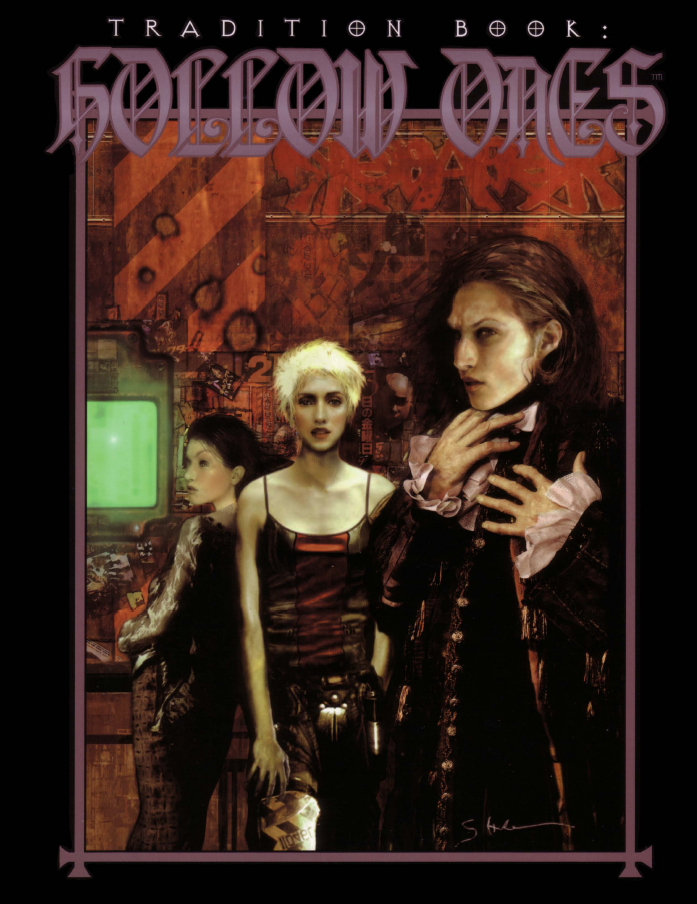
"I'm choking, but I'll be damned if I smudge my concealer."
"My hair is bleached, like a skull in the desert. My tits are fried eggs, like my brain on drugs."
"Excuse me? Am I in the wrong artwork? I'm supposed to be on the cover of Shadowrun."
The Hollow Ones, per the Mage corebook, are a non-Tradition composed basically of goths, and the book does little to establish them as anything more than whiny adolescents of all ages. They don't have a seat on the Council, they don't have a preferred Sphere, they have no leadership and anyone promoting organization gets labeled a sellout. Their only strength is that their curiosity, coupled with a lack of conviction or conformity, leads them to dig up secrets which are interesting but which rarely lead to any kind of personal evolution, let alone any progress on a larger scale.
Given that they aren't even a real Tradition, the ongoing accusation is that the Hollow Ones are a bad joke that White Wolf tacked onto Mage--which isn't exactly a horror game, after all--in order to sell the game to their established goth fanbase. Here's what's funny--everything I've ever seen written about the Hollow Ones indicates that the authors were even acquainted with the goth scene.
In the interests of full disclosure, when Mage 2nd Edition came out in 1995, I was in middle school. When the controversial Revised Edition came out in 2000, I was close to graduation. I played Mage during middle and high school, and I didn't get involved in the local gothic scene until after I graduated high school. So I don't know what the gothic scene was like in Georgia (or anywhere else) in the 90s, and even today I'm only active on a local level. I don't claim any position of authority from which to criticize White Wolf's goth street cred.
However, I just keep noticing that the references to goth culture in descriptions of the Hollow Ones are vague and generic--there are references to absinthe, makeup, black leather and dressing like a vampire, but rarely any mention of bands, record labels, fashion brands, well-known events, or anything else that require a deeper knowledge than watching one of the "Goth Talk" skits on SNL.
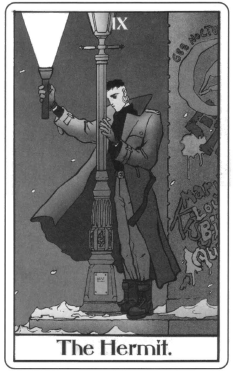
Homeless Neo doesn't know how to tell a ghost story.
You've seen "Big Bang Theory," right? Yes, I know, it sucks, it's blackface for nerds and hurts your butthole a lot. The first time I watched it, though, I noticed that the writers weren't afraid to admit that like most TV writers, they're big geeks--they featured Stan Lee and the referenced the minutiae of The Flash's powers, instead of a generic reference to a nonexistent "Stupendous Man" or something. White Wolf's writing about Hollow Ones and goths has that same lack of specificity.
So what happened when the Hollow Ones got their own Tradition book, even though, strictly speaking, they aren't one of the Nine on the Council of Nine and aren't a Tradition at all? Well, a splatbook can really make or break a faction in the World of Darkness. Here are two examples from Vampire, the game with which I'm most familiar. The Brujah revised clanbook is great--Justin Achilli evolved the Brujah from "Anarchy! Down with the elders! Burn motherfucker burn!" to a clan that had its roots in a long line of soldier-philosophers who want vampires to be more than bloodsucking monsters, but who are repeatedly slapped in the face by the reality that vampires are parasites who feed on mankind, and only have a culture of their own after the pattern of criminals and addicts. Their great ideas come crashing down again and again, while the Ventrue quietly survive and acquire, because despite being civilized monsters they do not lie to themselves about the fact that they are monsters. And the Brujah are bitter about it, which is why their clan has largely devolved into outlaw bikers and street trash. On the other hand, you have the Toreador clan. The corebook marks them out as a bunch of glamorous, effete snobs that everybody hates. Their corebook plays them up as...a bunch of useless, effete snobs that everybody hates, and yet they're somehow vital to vampire society.
White Wolf's own measurement of the quality of a splatbook is called the Chupp Test--it's basically "Does the book make you want to play Splat X, even if you didn't before?" Does the Hollow Ones book pass? Let me put it this way: I see that Malcolm Sheppard worked with Angel McCoy, the author of this book, on another Mage expansion. Perhaps he can come along and clear up some of my misconceptions regarding the culture of White Wolf's writing staff and the fanbase it attracted. Until then, following updates will mostly be me wondering how many dicks the author had to have crammed in his ear to write this terrible, horrible, no good very bad splatbook.
Next Time, on "The Hollow Ones" : I actually begin to review the book.
Part i: Prologue, or An Orgy of Death. Death.
Original SA post
Tradition Book: Hollow Ones, Part i: Prologue, or An Orgy of Death. Death.
Hollow Ones opens with a short story about a potential recruit named Mark. It’s his birthday, not that he has anyone to celebrate it--certainly not his mother, a burnout addict. Mark is a teenage runaway, a not-quite-homeless street artist who sleeps on somebody’s floor and washes his one pair of pants when he can afford it. After a day spent trying to sell sketches until he could stand the cold and damp of the Seattle streets any longer, he returns home to his flophouse to find his “roommates” sprawled out on the floor--stoned, he thinks, until he realizes they’re all dead and he’s standing in a puddle of blood.
Mark stepped in a wet spot on the carpet. It went “squich.”
A gang comes through the kitchen door and one of them fires a shot at Mark. It misses him, but the next thing he knows he wakes up on the floor with a man beating the shit out of him, demanding to know where to find a book--Mark knows nothing about it. As the thug methodically beats the life out of Mark, he drifts in and out of consciousness, flashing back to similar abuse from his father. Mark comes to the conclusion that he’s of no use to anyone, he should have died years ago at the hands of his father or himself, and that death is a reasonable answer to a pointless, painful life. He gives in to the pain and waits peacefully for death.
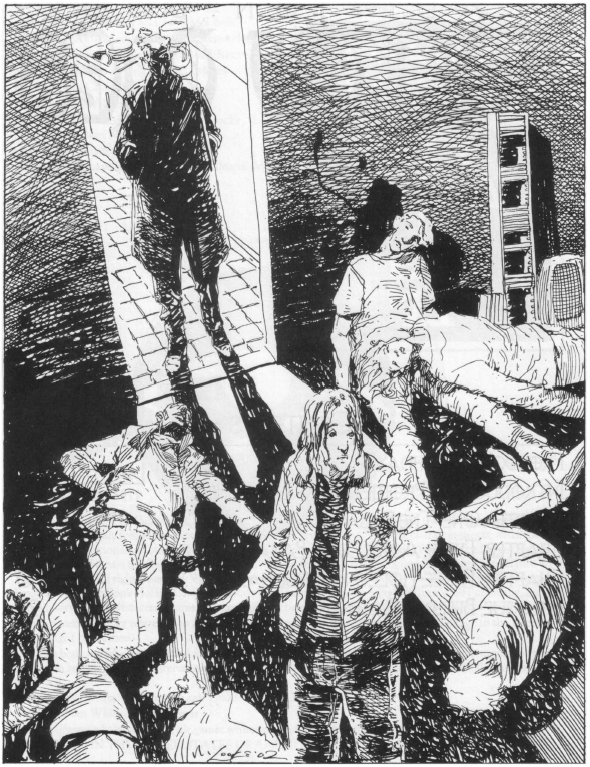
You know how this happened? That’s right--Obamacare.
At that moment, Mark Awakens and feels no fear. Time slows down and he feels supernaturally aware of the people around him. He perceives an old man speaking to him in a guttural French accent, dressed as if it’s the nineteenth century, telling him that help is on the way. Things suddenly go back to normal, so to speak--Mark’s lucidity wavers as he realizes another group of people have arrived to rescue him. He sees them slinging around heavy-duty magick--bodies flying across the room, flesh melting away, and people blinking out of existence.
A woman who introduces herself as Mysry--I insist on pronouncing it “Miss Rye”--helps Mark to his feet and half-carries him to an old black VW Bug as his rescuers split up and scatter. Mysry tells Mark that he just experienced an Epiphany, then bombards him with questions like she’s his babysitter--Are you gonna freak? Are you hungry? You’re not going to puke in the car, are you?
Mark isn’t hungry, probably because he has internal bleeding. He feels that a part of him died and was left behind in the apartment--a part of him that was glad to be rid of.
Hollow Ones, Part ii: Introduction, or The Postmodern Prometheus
Every Hollow One is like Prometheus, because they “defy the gods” in the form of whatever status quo is available to rebel against--the Council, the Technocracy, whatever ya got. But as in Shelley’s Prometheus Unbound, they escape their chains, because heroism and romance conquers conformity and oppression.
(Could it be? Are they completely ditching the “We’re very dedicated to not standing for anything” ethos of the corebook Hollow Ones, treating that as only what the proper Traditions say about them? I don’t know. They seem to have completely missed the part where Prometheus disobeyed the gods in order to help humankind, not to be a rebel for the sake of his own ego. Then again, I’m pretty sure Shelley did, too.)
Hollow Ones follow individual paths. We’re told that all Hollow Ones follow an individual path—there’s no lexicon for translating common Mage jargon into Hollowese, and there’s no Hollow paradigm as concerns actual willwork. Their style is all about self-expression, and this leads to a New Agey syncretism—Hollow Ones will perform channeling to invoke Lord Byron, or venerate Yog-Sothoth with yoga. The gothic look is just one popular fashion amongst the Hollow Ones—apparently “just as many” dress like ravers, or else they either keep up with the bleeding edge of scene fashion, or they lock themselves into one particular and specific retro look—Victorian, Roaring Twenties, and so on.
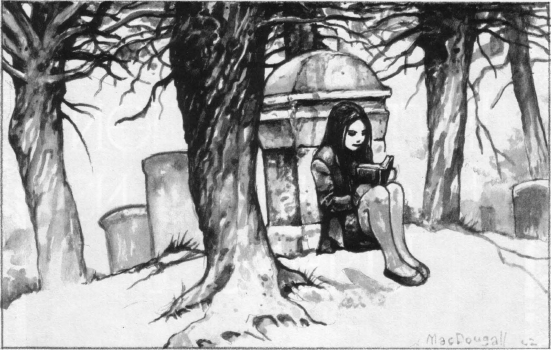
See Spot. See Spot’s mascara run.
So what’s the common thread between these people who have nothing in common? In a word, Romance. Romance is the Hollow Ones’ tradition-that-is-not-a-Tradition, and the paradigm they defend against the numbing conformity of the Technocracy. The “heart of goth” (I thought they weren’t all goth?) is doomed heroism and tragic romance, like Byron and Keats and the Shelleys and…all those other guys…went on about in the 19th centuries.
(This is going to be a recurring theme in the book, by the way: A token note protesting that Hollow Ones aren’t all goths and punks, followed by describing them all as goths, with a very shallow understanding of that scene. The idea of a diverse Tradition based on the concept of Romance is one with great potential, which you’re about to see squandered again and again.)
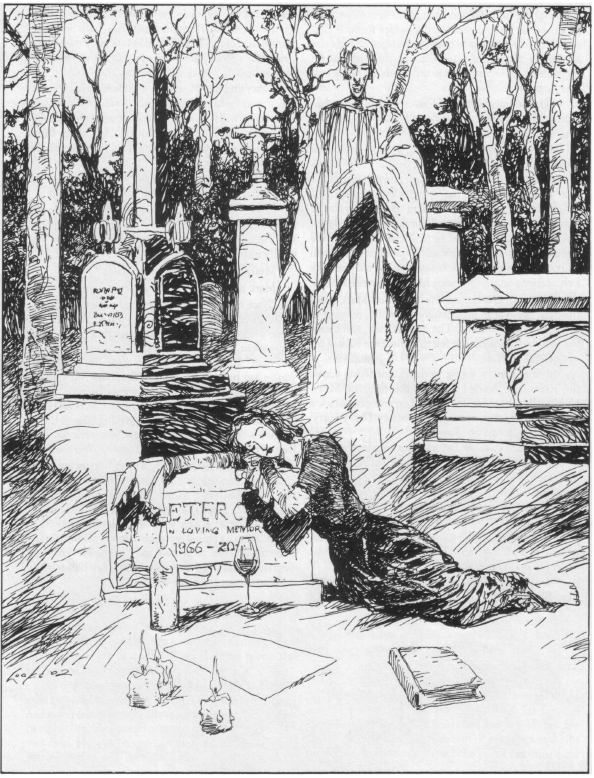
Slenderpriest considers buying a Posturepedic headstone.
The problem with Romance is that you can’t assemble an army of mages to go fight the Technocracy to make the world Romantic. Besides, how can you win a victory in the cause of facing doom with nobility? This is why the Hollow Ones are resigned and apathetic, at least in the eyes of the Council of Nine. But making the world Romantic is the job of people willing to martyr themselves for the things they’re passionate about. If the whole affair is a losing battle, that was the point! It’s a win-win scenario, from a certain very fucked-up perspective.
Hollow Ones go for everything ROmantic or gloomy Victorian. Imagine gardens with dead roses at night under a full moon, as statues of weeping angels look on. Lonely maidens riding mares across misty moors or windswept shores. Tortured poets tossing failed manuscripts about candlelit rooms, standing on canes to bolster leg injuries that just won’t heal.
(I thought they were postmodern?)
Next time, on Hollowkissangel : The Saga, or Fragment of a Fanfiction
Chapter 1: Distractingly Obvious
Original SA post
Tradition Book: Hollow Ones, Chapter 1: Distractingly Obvious
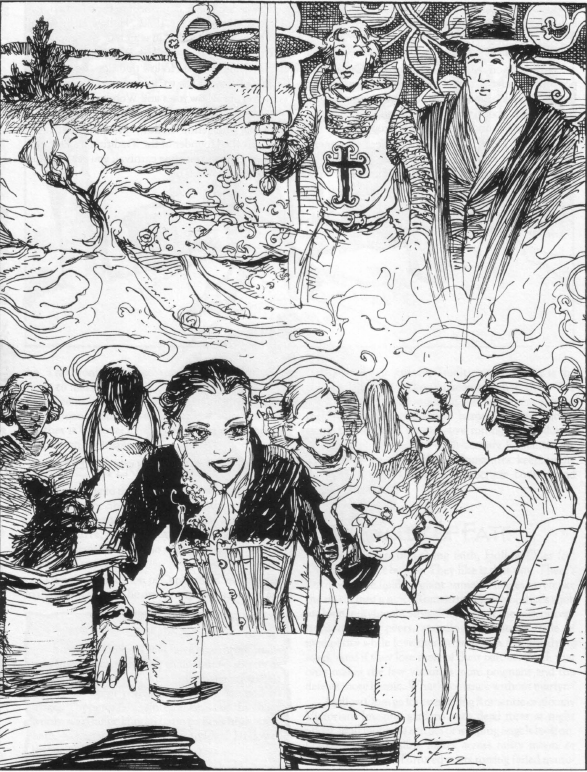
La Recherche du Pepe le Pew
The Hollow Ones book came out in 2002. Like many of World of Darkness books from that period, it delivers much of its content through a fictional dialogue or personal account. In practice, this means it reads like a history of the Hollow Ones, but padded with trivialities like “She took a sip of her coffee” every few sentences.
Did I mention that the fiction is really bad? Let me tell you why it is bad. I solemnly swear that I haven’t read fanfiction since I was a teenager, but I know that this has the unholy mark of fanfiction upon it. Every time a new character walks in--which is often, since this chapter takes the form of goths having a kaffeeklatch--the narrative grinds to a halt so that the author can describe their appearance in detail, from their hair to their clothes to how they smell.
Mysry was hot. She wore her desert-colored hair short and scrappy, like a boy or a computer tech who just doesn’t give a shit about her looks. She didn’t wear any make-up either. Everything else was all woman. Her black turtleneck was of a thin material. Her smallish breasts lay loose and low enough to make it distractingly obvious that she wasn’t wearing a bra. She stepped up next to Mark and said, “Hi.”
Mysry and her buddies have lots of important things to tell Mark. You know that these things are important because the author stops to tell you how important they are.
”Penny is visiting us from San Francisco. she learned from Neville Nevermore himself.”
“Neville Nevermore?” Mark asked. The name felt powerful upon his tongue.
Oh, and
Mark peered up at the speaker. It was the gothette from the counter. “Huh?”
Gothette. Seriously.
This chapter begins with Mark meeting up with Mysry at the nearest “goth cafe.” Because this is the World of Darkness, where corporate buildings are decorated with gargoyles and freestanding, open-all-week goth clubs are a profitable venture. And everyone owns a trenchcoat. After some stultifyingly detailed dedicated to Mark’s espresso order and Mysry’s fashion accessories, she introduces him to Penny Dreadful, who--
The goth held herself with stoicism, prim and proper, a pair of black glvoes in one hand and an old-fashioned, leather doctor’s bag in the other. Black lace, ruffles and silver buttons all combined to paint her into the perfection vision of a Victorian widow, mourning the loss of her one true love, a young Miss Havisham in negative.
Yes, well
Her body was ripe, full-figured and sexy. The luminescent pallor of her face, rounded cheeks and high forehead, persisted even under the glare of the fluorescent lighting. Black-framed librarian glasses slipped down her austere nose. Her lips, like her body, were ripe, full and fleshy, painted burgundy wine.
Christ on a spike would you shut up I’m trying to
The woman cast an imposing shadow over the table, even though she couldn’t have been much taller than five and a half feet. Her hair added a good inch or two, teased up and enhanced with streaks of white and royal purple amidst the black--extensions undoubtedly. The figure eight of her torso was exaggerated by a midnight corset, blue-black brocade. It and the fullness of her mesh skirt made her hips look all the more feminine and rounded. Up close, she smelled of flowers that Mark couldn’t identify.
Sigh. This is Penny Dreadful, the Hollow Ones Signature Character and a Really Big Deal, you guys. She’s an overdressed thick goth girl. Who smells like flowers. That’s fitting; everyone we meet in this book will be a thorough douche, I’m sure.
Mysry and Penny are here to give Mark a lesson in the history of the Hollow Ones. She explains that it’s impossible to say precisely where the Hollow Tradition began, but that it’s tied to the concept of Romance--romance meaning heroism, tragedy, true love, and individualism against the odds. “The Hollow tradition,” she says, “is not a club, it is the Living Embodiment of Romance.” She says this out loud. She makes Mark repeat it out loud. Then she makes him say “I...am the living embodiment of Romance.” The author tells us how serious and profound this is.
I’ve figured it out now. Mark is a Loser Outcast. He’s homeless and broke and no one loves him and he wears old dirty white tennis shoes. But with the help of Penny Dreadful and her pals, he’ll become a Cool Magic Outcast. He’ll still be weird and different and despised by the mundanes , but it won’t affect his life negatively in any way. He’ll always be dressed like he has a team of employees to acquire the perfect goth wardrobe and spend two hours making him up every morning. He’ll drive a hearse. He’ll be seen at all the cool places the normals don’t know about, and his place will be a tastefully dilapidated Victorian mansion. Where will it all come from? Magic(k).
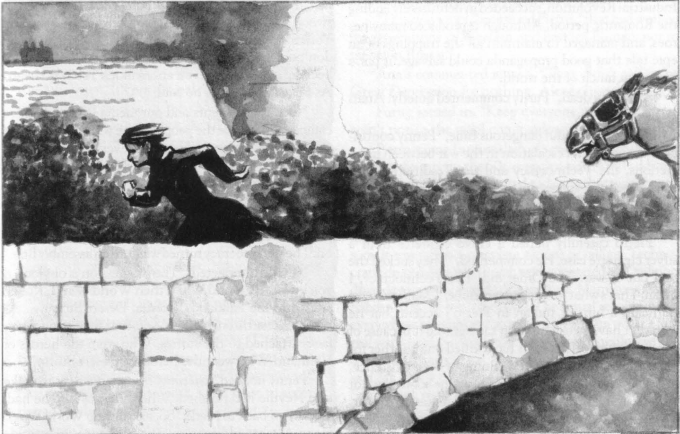
Wait! You dropped your compact!
On with the actual history! Hollow Ones trace their origins at least as far back as the 12th century, in the traditions of chivalry and feudalism and the emergence of Gothic architecture. They started hearing the term “Gothic” as an insult in the 16th century when it was used to criticize medieval architecture as a barbaric reaction against classicism. That’s okay, says Penny; classicism needed to die. Classicism showed up again in Enlightenment of the 18th century, and was rebelled against once more by the 19th century Romantics. The Romantic movement effectively birthed the Hollow Ones as we know them today.
Classicism sucks, by the way! Penny’s pretty sure it’s where the Technocracy got started. Classicists only cared about what they could measure, slavishly imitated Greece and Rome, produced cold and lifeless art, tried to control everybody’s thoughts and were just totally no fun. So the Romanticists came along and kicked the door in and advocated freedom and love and individualism and the search for inner truth. Although much the Victorian period was a reaction against Romanticism, it produced works like Frankenstein , The Picture of Dorian Grey , love poetry, and declarations of the rights of women that were assimilated into the Hollow paradigm, along with American authors such as Thoreau and Twain.
Mark’s history lesson is interposed with a sequence where Mysry gets him a job and an apartment, and then takes him shopping so he can replace his old clothes with black t-shirts, jeans, black buckled boots, and the obligatory black leather trenchcoat. She introduces him to Penny’s cabal, a bunch of Hollow old farts, who are each introduced with their silly name and a description of how they dress.
Mark had never seen any man look so completely goth. Neville even wore make-up. He outlined his eyes with black and drew them outward with sweeps of coal gray. he had painted his lips black. His cheeks had deathly shading, a shadowy blush applied with care. A black velvet suit and midnight satin vest over a white pirate’s shirt would have looked ridiculous on anyone else. On anyone else, it would have resembled an Austin Powers hand-me-down. On Neville, it looked elegant.”
There’s a bad writing technique called ”You Can’t Fire Me, I Quit ” where you anticipate that your readers will find your writing ridiculous, so you try to cut them off at the knees by assuring them that no, this is serious. Imagine a guy wearing a ton of makeup and a pirate shirt. Are you impressed with this man? Oh, and by the way, this is the beginning of what I was talking about when I said that the author seems to have been assigned to write a book about goths without knowing anything about them. I mean, oh wow! Neville is so goth he even wears makeup ? Gee golly jeepers!
The fashion victim cabal explains to Mark that WWI was the death knell of the Romantic Age. Wars used to be about passion and produce heroes, you see, but WWI and the wars that followed it made war an increasingly industrial affair. In fact, they all seem much more bothered that industrialized warfare is unromantic than by the fact that it produced an unprecedented body count. One of them points out that there’s nothing Romantic about firebombing entire villages--I guess it’s better to go in on horseback to pillage and rape first.
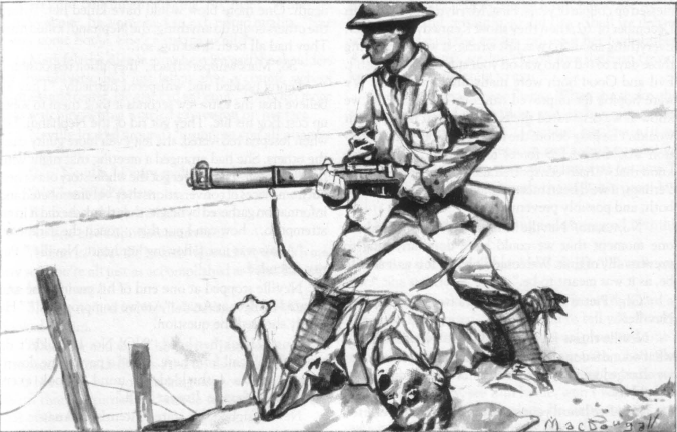
Do not make fun of my Imperial Guard army.
With the mass murder of all those uncool mundanes behind us, the cabal goes on to explain that the Hollow Ones got together in the 1920s when they were still called the Orphans. After a few years of roundtable discussions, they decided on a plan that wasn’t really a plan, but a philosophy that was too fluid for the Technocracy to define and discredit. The movement was centered on six artists and intellectuals, four of whom are part of the group talking to Mark, who Mysry has renamed “Mark Moon” with no explanation given.
Next time, on The House on Hollow Hill : I just realized that this book is only organized into three chapters, so covering the whole first chapter is too much to digest. So next time around, the Scene Queen Cabal has a spat.
Chapter 1 Part 2: Atrocity does not necessarily equate to a lack of romance
Original SA post
Tradition Book: Hollow Ones, Chapter 1 Part 2: Atrocity does not necessarily equate to a lack of romance
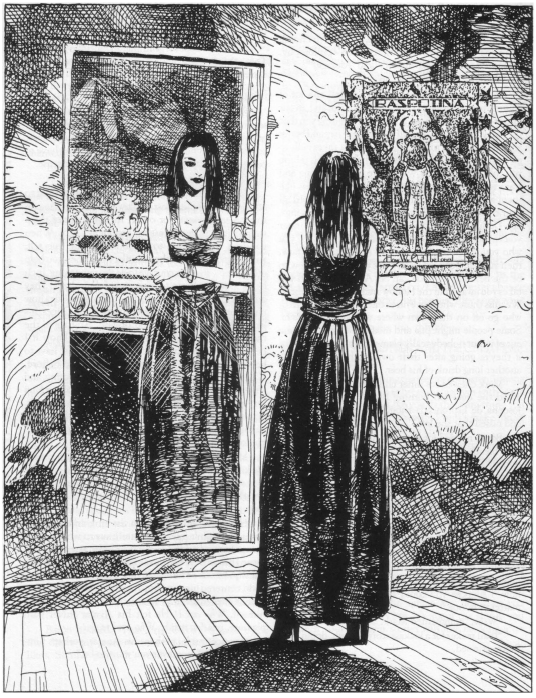
God, it’s cold in here. Do you think I should put up some more pictures of butts?
In the last update, I meant to tell you the origin of the name “Hollow Ones.” Let me do that now. You can thank Neville Nevermore, he of the gay pirate shirt and velvet everything. Back in the ‘20s when he and his cohorts were inventing the Hollow Ones, a mage named Lady Astria Moonshade asked them “Who are you?” and Neville replied “We are the hollow men,” quoting T.S. Eliot’s poem. The name stuck.
So: The “Living Embodiment of Romance” takes its name from a poem by a Modernist who later described himself as a classicist, and wrote the essay which revived interest in the metaphysicists. Great.
When we left off, Mark was in a private audience with a cabal which includes Neville Nevermore and Penny Dreadful, discussing the origins of the Hollow Ones. After WWI put a bullet in the head of the Romantic era, a group of like-minded Orphans decided that they needed a way to be involved in the Ascension War, above and beyond rebelling against the Technocratic status quo in individual ways. The way this cabal sees it, the Industrial Revolution was a Technocratic coup, as was Prohibition. Prohibition backfired because cops-and-gangster stories produces heroes; the Technocracy ended Prohibition and instigated the Depression to numb people with booze and misery. The Traditions fought the Technocracy in the 50s and 60s with mind-expanding drugs--wait, the author and I are getting ahead of ourselves.
So, these artists and intellectuals got together in the 20s and talked to each other a lot. Four of the original six are part of Penny’s cabal.
”Neville, of course,” Penny replied, indicating the man with a wave of her hand. Neville cast Mark a bitter smile. “Anais and Purity.” Anais blew Mark a kiss. Purity bowed her head and touched her fingers to her forehead. “And Pietro.” Pietro huffed a dramatic burst of clove smoke up into the air but otherwise made no particular gesture of recognition.
“Wow,” uttered Mark.
The original six met “in Europe” over five years, but moved to San Francisco during WWII, where they still maintain a Horizon Realm called Waydown. The cabal survived intact until a battle with Nephandi on New Year’s Day 1964, when member Bog Asphodel sacrificed himself to save the last and now long-lost member, Josepha de Espronceda. They lost the fight because they were all hungover.
Those present knew the time had come to tell the saddest part of the story. They all dreaded it. They all soaked in the dreading .
The conversation reveals that Josepha made contact with and may have been tainted by the Nephandi, and what’s worse, Anais called her recently because she missed her! As their security may be compromised, the group disperses.
Do you remember that we were supposed to get an explanation of how this ragtag group of Bohemians created the Hollow philosophy, along with What It Is and How It is Done? I’m afraid that we don’t. The idea of a philosophy or indistinct cultural meme being deliberately developed as a weapon against reality fascism is an idea worthy of Grant Morrison’s best work, but it gets sort of tossed to the side in favour of the personal drama of Neville Nevermore and company. Mysry tells Mark that the original cabal has survived mostly intact to the present day, and that they’ve provided input and support the the movement, and established Hollow chantries so they’d have a place to mince about being scene queens, but that’s all we get.
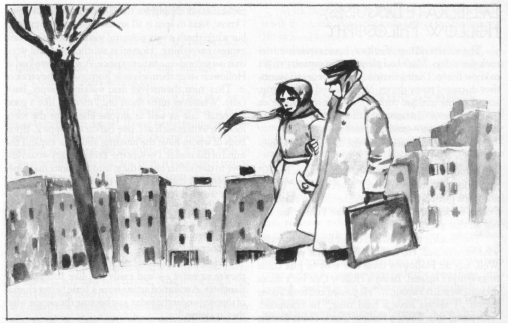
I don’t remember why I built all these tiny apartments. Probably absinthe, from the way they’re leaning.
Neville summons Mark and Mysry to apprise them of a rash of break-ins in Hollow chantries, by some mysterious intruder(s) who always take some valueless trinket and leaves an eyeball in its place. The Hollow Ones pair off to investigate at Hollow chantries around the world; Mark is paired up with Baron, a San Francisco local. Baron is a relatively unaffected Hollow One, a middle-aged, brown-haired, goateed man who dresses like he’s going hunting in the country circa 1930. Using postcards as his focus, he teleports Mark around the world for brief stops at chantries in France and Italy. Baron says that he’s surprised no one’s ever made a serious play at turning the Hollow tradition into their own cult of personality, but you have to understand that American Hollow Ones are a unique breed.
”Well, technically I suppose you could say that modern goth originated in the US, but it has spread to Europe.”
Jesus dogfucking Christ, Angel McCoy. They had Google in 2002, didn’t they? They definitely had Mick Mercer. Fuck you.
Baron reminds Mark that he’ll largely be left on his own to learn magick and the Hollow philosophy, and that Hollow chantries are the best place to seek refuge, collect himself, and read, read, read the history of the not-a-Tradition. A few notable chantries are mentioned:
Le Corbeau Cruel : A cafe in Paris, run by three Awakened brothers who are descended from the duVauge family, whose line has traditionally prepared the bodies of the French royalty for burial. They play classical music, Enya, and occasionally Depeche Mode.
The Veneducci Hotel : An unnamed hotel in Milano, Italy within walking distance of the Duomo cathedral. It’s passed through the hands of many owners who haven’t been able to make it a successful business, and is now owned by a Hollow One who had 20 suites repaired into comfortable living quarters and uses the 1920s ballroom as a Hollow salon.
Wookey Hole : A network of caves in the town of Wookey, near the Wells cathedral in Somerset, England. The Hollow Ones who maintain the chantry consider themselves the “Guardians of the One True History” of not only the Hollow tradition but of history stretching back to antiquity.
Decadence : In Rio de Janeiro there are two Hollow chantries. The city’s Tradition is divided between those who want to help the poor, and those who want to live it up in aristocratic opulence. The Decadence club is for the latter faction; the former cluster around a youth hostel for travelers, the underprivileged, and the Hollow Ones from the street.
Hohe Strasse : The Hohe Strasse is a particularly historic street in Cologne, Germany. Partway down the street is an opening into a 19th century courtyard and a cramped apartment which serves as a Hollow halfway house. It’s run by Fraulein Kirchin, a polyglot Hollow One who dresses like a Puritan and is often mistaken for a historical reenactor, who doesn’t mind serving as a local history guide for tourists.
Moscow, Russia : Rather than a single stronghold, the Moscow chantry is a network of small apartments across the city, linked by the Internet. Hollow culture has mainly come to Russia through gothic websites, which have the local adherents to the Hollow tradition dressing like American mallgoths. Accustomed to persecution and censorship, Russian goths have a secret language of signs and gestures to identify one another.
Waydown : The Waydown was a club in San Francisco that put on events sporadically in accordance with the whims of the organizers--it was also a Horizon Realm. Since the Avatar Storm, the club has relocated to a secluded warehouse, and its once-legendary parties no longer include Sleepers or other guests who haven’t been thoroughly vetted. The “Waydown Viktae” who run the place includes Neville, Penny, Baron, and several others. It’s decorated like every “goth club” you’ve ever seen in a movie or video game--black drapery, stained glass, and candelabras.
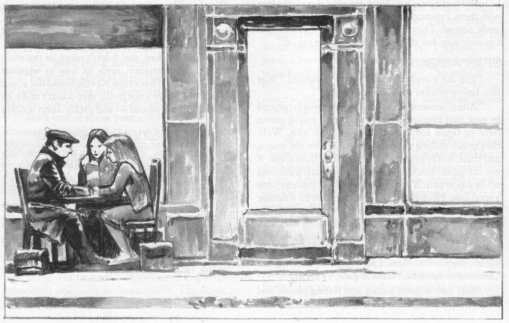
Zis Hollow Paradigm hass final plan for gettink pesky moose and squirrel.
Baron tells Mark that being Hollow isn’t about dressing funny, but about “finding your own true self and having the balls to show it off.” According to him, Hollow Ones have avatars that instill cravings within them--for heroism, tragedy, and other emotional heights that make them a bridge between the past and present. Penny, he says, likes to wrap this indefinable milieu around the word “romance” but that “horror” is another one that serves.
”I mean, I like a good Lovecraft tale as well as anyone else--or the more modern writers such as Clive Barker or Poppy Z. Brite, both of whom have the amazing ability to expand the mind of the reader. I’m sure the Technocracy would just loe to turn either one of them into corporate machines pumping out crap to cover up their talent. But, as long as we watch over people such as them, it will never happen.”
That’s totally how a human being talks. Oh, and you can blame the Hollow Ones for Poppy Z. Brite’s career; Baron says so. (Disclaimer: The only Poppy Z. Brite I’ve read is “Are You Loathsome Tonight,” which was very good and one of the two bright spots on the otherwise thoroughly mediocre anthology Children of Cthulhu . The other was “Details” by China Mieville.)
Baron tells Mark that most Hollow Ones are artists in some way, because it’s all about self-expression. However, he sums up the Hollow ethos in two words: individuality and courage. This means that if your soul tells you to express yourself by decorating everything you own with skulls, you
Next time, on Hollowlander II: The Quickening : Chapter Two, “The Hollow Paradigm.”
Chapter 2: Insert Highly Creative Goth Nickname Here
Original SA post
Tradition Book: Hollow Ones, Chapter 2: Insert Highly Creative Goth Nickname Here
As you’d expect, the “Hollow paradigm” is a vague thing that’s difficult to define, especially from the outside. It’s more of a pattern of tendencies than a theory or a principal teaching. Their magickal tools and methods are focused on having personal meaning and being practical and cool . Oh, and being coincidental. Hollow Ones are actually in a very good position following the Avatar Storm. They’ve never been wealthy or cohesive enough as a group to have Horizon Realms, great chantries, or elite partisans like the Golden Chalice to protect them, so they’ve gotten very, very good at keeping their magick subtle, an ironic contrast to what you’d expect from a bunch of preening melodramatics. (Some young Hollow Ones are flashy with their magick. They don’t become old Hollow Ones.) So lately, the Hollow Ones have Traditionalists sheepishly coming to them for advice on ritual work.
The book says that the Hollow Ones can be considered “major players” despite not being a faction, though it doesn’t say exactly why. It’s very rare for them to coalesce around a single goal and pursue it, but it can happen if a prominent figure (like one of Neville’s cabal) is involved. Really, the Hollow Ones think the Ascension War is bullshit. As a group they’re completely cynical about the ideal of universal Ascension, for reasons which are one part enlightened and one part crass arrogance.
I’ll start with the latter: The last thing most Hollow Ones would ever want to devote themselves to is trying to raise the mindless sheeple to their level by handing them keys to Ascension they wouldn’t understand or appreciate. The most supercilious just don’t want a crowd of hangers-on imitating their style. That said, everything about a Hollow One’s Awakening is supposed to be individual and personal. Magick and Romance are things to be experienced and shared, but not transmitted or wrapped up and given as a gift. Real Hollow Ones understand that if you truly believe in your personal paradigm, you don’t need someone else to validate it with their agreement. For the same reason, most Hollow Ones don’t believe in personal Ascension, either. Awakening is about discovering your true self, and the Hollow tradition is about being that person fearlessly and without compromise--that’s the price and the reward all in one.
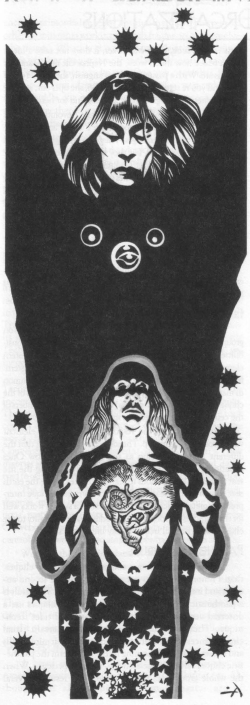
And theeese are the dead man’s guuuts
Sleeper subcultures are full of Hollow One wannabes--kids who dress in black, name themselves Lenore or Raven or something, and complain that no one understands them. What separates these poseurs from real Hollow Ones is that they’re not really sad because they’re different, they’re sad because they’re afraid they’re not different, and they’re only brave enough to speak and act differently when it’s getting them some kind of attention they want. (This doesn’t explain how Penny Dreadful, who has a gimmick name and looks like she needs an hour of primping before she leaves the house, is a genuine Hollow One.) Some Hollow Ones believe that the whole trend of “dark and edgy” culture throughout the 1990s was a Technocratic plot.
The Hollow attitude ensures they don’t form master/apprentice relationships like many of the Traditions, much less have finely-enumerated dogma, creeds, houses, and lineages. They’re about as far from the Hermetics as you can get, except for the part about not wanting to share whatever they consider their really good stuff. Hollow recruits get told to figure themselves out, not sling magick around like an idiot, study as much as they can, and otherwise find their own way.
The actual word “Hollow” means (surprise surprise) different things to different Hollow Ones in formulating their approach to magick. Philosophically, it’s usually taken to mean that life has no inherent meaning, and the existential question that comes along with that. Magickally, it seems to usually mean something about hollowing oneself to make room for the magick--the two examples given are a channeler seeing herself as hollow inside in order to accommodate a Spirit, and a mage clearing his consciousness to achieve “Zen no-Mind” and work Mind magick. Nobody knows what Neville Nevermore meant when he coined the term by way of quoting Eliot, and he’ll probably take it to his grave. For all we know, he was being flippant, and was smart enough not to argue when the name stuck.
Chapter 2, Part 2: Factions and Fads
Whether they want to be labeled or not, Hollow Ones can generally be grouped into one of two factions: Councilors and Revolutionaries .
Councilors are the more involved and optimistic Hollow Ones. They’re not interested in trying to win the respect and recognition of the Traditions for its own sake. They think that the futures offered by the Technocracy, the Nephandi, and the Marauders are nightmares worth fighting against. They don’t believe that magick is draining from the world, but changing, and the Traditions are making themselves irrelevant with antiquated methods. The Traditions need the Hollow Ones to motivate them and teach them how to adapt to the modern world--that would be bad news for the Technocracy.
Revolutionaries just want to be left out of it. The Technocracy sucks, the Traditions suck, and the Nephandi and Marauders are obviously crazy. They’re in it for whatever they can eke out of their own Awakening. They don’t work well with other mages at all, especially mages who aren’t fellow Hollow Ones--in fact, they’re more likely to associate with ghosts, vampires, fey, and shapeshifters.
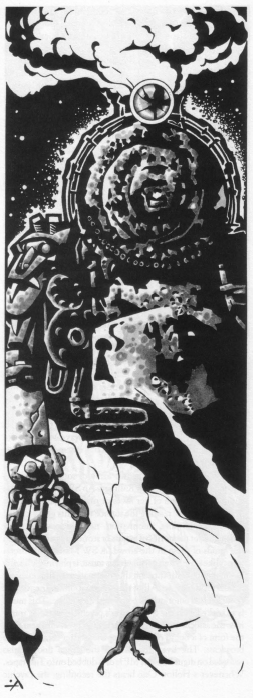
The fuck? This is a boss battle from Final Fantasy 3
Cliques are... types of Hollow Ones, I guess. The term is used to denote a model for a cabal, an entire mission and lifestyle, and various fads.
An elemental clique is a cabal where each member occupies a position corresponding to an element (Western or Eastern, whatever). Their personal and magickal development will correspond to their current seat.
A pantheistic cliques is also a cabal, but with mages who believe they are “possessed by their avatar” and come to embody the traits of some ancient pagan deity or hero. There’s disagreement as to whether it’s a legit form of channeling or just a weird form of shared Quiet, but it works. One drawback is that it tends to produce specialists who constitute a “one of each type” team that enemies can pick apart and destroy.
Incognitos live their lives as moles inside the Technocracy, aiming to take it down by aggravating the internal strife between the different Conventions, and by disseminating the secrets they uncover back through the Hollow network.
Voudoun Gangstas are the last living remnant of the legends that glorify Prohibition-era gangsters. They’re mostly African American, practice a hodgepodge of voudoun and any African mysticism they can get ahold of, and originated with the bootleggers of New Orleans. It seems they’re not involved in the drug trade themselves anymore; in fact, they see themselves as defenders of the downtrodden and wage war against gangs who deal drugs (such as crack) which are deliberate Progenitor conspiracies to keep urban areas economically depressed.
Soundwave Masters are DJs who use techno music to encode information as part of the informal network of gossip and espionage tradecraft called the Hollow Network. They usually excel in Mind and Forces, are in tight with the Traditions (especially the Cultists and Adepts) and infuse their music with psychic essence that spreads the emotions associated with the Hollow tradition.
The Railroad Riders keep the Hollow Railroad going by serving as lone, self-reliant, all-purposes couriers of information for their fellow Hollow Ones. They carry secret messages encoded in their own dreams, and share records of Soundwave Master performances. They tend towards martyrdom; they tempt a lot of Paradox by using Correspondence to get from Chantry to Chantry in a hurry. In a rare moment of what could be called actual research, the author says the first Rider was a British goth named Telegram Sam.
The Social Terrorist Punk Cells have a wordy name for a simple concept: They’re violent punks with a hate-on for the Technocracy and no sense of self-preservation. They gladly throw themselves against HIT Marks and the like alongside the warriors of other Traditions whenever shit goes down.
Like the Incognitos, the Moles infiltrate the Technocracy, but not to act as agents provocateur. Instead, they gather information. If an Incognito is in a Technocracy boardroom inciting his “fellow” Progenitors to invite a nasty scrap with Iteration X, then a mole is the secretary or janitor who overhears the whole thing and simply records the information to disseminate later.
Hollow Ones refer to their members who’d rather talk to the other things that go bump-in-the-night as Outsiders . “Gaunts” deal with ghosts, but make friends and allies with them instead of binding them to their will--ghosts want things, it turns out, and they’re powerful allies if you’re able to listen and willing to help. “Mangers” who want to hang with shapeshifters are usually Kinfolk, as it’s otherwise difficult to gain their trust. “Blood Bags” are aptly named, because mages who think they can hang with vampires don’t usually last long--they rarely end up ghouls, but often end up addicted to the Kiss. If they don’t die young, the best they can probably hope for is to wind up a tool in an elder vampire’s pocket. Relationships between Hollow Ones and fae don’t go much better--many Hollow Ones are escapists, and however well-intentioned, fae glamours and enchantments usually result in the mage either going completely off the deep end, or experiencing crushing withdrawal when they snap back to reality.
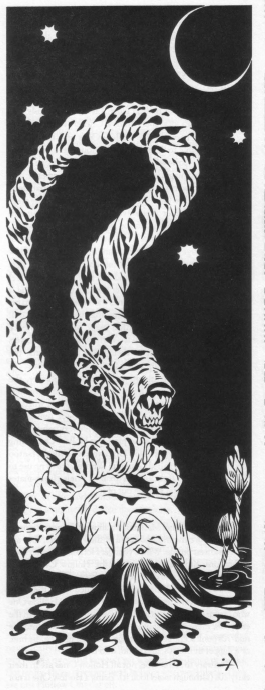
Hello mah baby, hello mah honey, hello mah ragtime gal
Hollow Masters are rare and elusive. In contrast to their young brethren, they eschew their own reputations and maintain a low profile. Although the Hollow tradition has only officially existed for a matter of decades, and the oldest Hollow ones seem to have grown up in the 20th century, there are always rumours that however old a Hollow One is, there’s another one who’s older. Hollow Masters tend to emerge into a scene from time to time, disseminate some art or information they think the young ones will find interesting, be aloof and snide, and then submerge into obscurity. Generally speaking, they’re not ostentatious, except that they do like to flaunt the fact that they know a lot about people who know nothing about them.
Like I said, the Hollow Ones don’t practice master/apprentice relationships as the other Traditions usually do. In fact, the way Hollow Ones are “raised” appears childish and cruel to most of the other Traditions. Adept Hollow Ones rear the youngsters on a diet of condescension, ridicule, and magickal pranks. The elder Hollow Ones don’t actually enjoy it; the idea is to toughen up the initiates while allowing them to develop their own opinion on everything. The rationale is that if they can’t develop a thick skin and a strong sense of identity in the face of schoolyard bullying, they’re going to be easy prey for Nephandi, Technocrats, and Tradition fanatics. Hollow Adepts look forward to when an initiate will turn one of their magickal tricks back on them. That’s how you become accepted as a Hollow One, by forcing other Hollow Ones to recognize your merits. Hollow Ones of equal status are also prone to subtly pranking each other and testing one another’s defenses, and the initiates form cabals for mutual protection from their elders. This is how the Hollow Ones are able to band together in times of strife and work as a well-oiled machine, without having to be a hierarchical organization with formal rank and dogmatic teaching. The masquerade is also a part of the Hollow mindset--if the term “Hollow” actually does mean anything, it’s that the Hollow Ones acknowledge that the costumes and made-up names and carefully constructed demeanors are a cover for the fact that deep down, they don’t want to calcify the ineffable core of their Avatar and their selfhood by putting a name or a definition on it. They’re not hollow of meaning, just hollow of anything that can really be labeled.
Every year, the Hollow Ones elect a “king and queen” at a big party--the ones chosen are always one Councilor and one Revolutionary. These two are obliged to appear as representatives whenever the Traditions ask for a Hollow envoy. They fight all the time, which gives the Traditions a look into the Hollow way of doing things.
The Hollow Railroad is a complicated network of information-sharing among the Hollow Ones, using both normal and magical means. Correspondence and Time can be used to send messages quickly, and Spirit is used to encode spectral signs, but they also share information in the form of mail art, tape-trading, and the like. It’s considered bad form to share information via direct conversation--you don’t brag about your own accomplishments, and you don’t directly ask another mage exactly how competent they are in the Spheres. Telling tales of another Hollow One’s accomplishments is a respected tradition, though.
Next time, on Hollowton Abbey : Hey! They’re mages! They do magick! Let’s talk about that.
Chapter 2, Part 2
Original SA post
Tradition Book: Hollow Ones, Chapter 2, Part 2:
When we last left our insufferable antiheroes, we were discussing their paradigm, factions-within-factions, and how they keep in touch. Now we’ll get into the nuts, bolts, and eyebrow pencils of how they actually cast magick spells.
A special thanks to Malcolm Sheppard for Tradition Book: Euthanatos and to Justin Achilli for Clanbook: Brujah , which I flipped through when this book was driving me crazy.
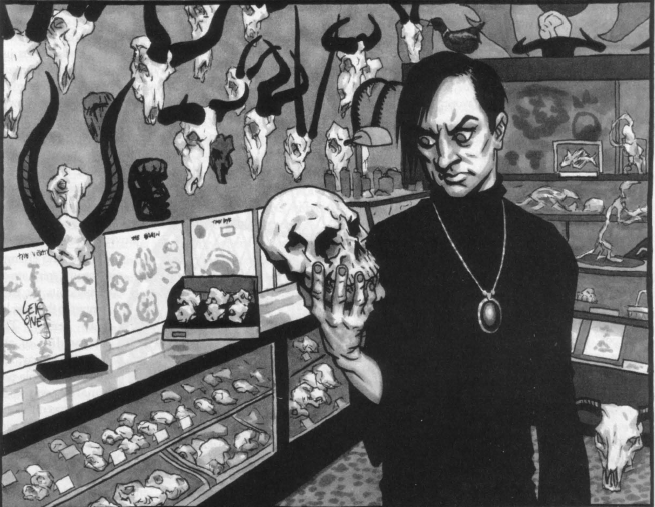
Poor Yorick. He never even bagged a ten-pointer.
Hollow Foci
Makeup : A popular Mind focus, makeup allows the Hollow One to ready themselves by “putting on their face” and adopting a carefully crafted but false persona as an analogue to the Zen No Mind.
Clothes : That phrase “self-expression” comes up again; Hollow Ones are the type of people who think individuality means having that thing you always wear. Cloaks, boots, dresses, and leather jackets are all mentioned as popular Prime focuses.
Tattoos : Tattoo foci are A Big Deal for Hollow Ones, used as identifiers as well as foci. Flames for Forces, skeletal and gambling motifs for Entropy, circles and polygons for Matter, eyes for Mind, and so on--the symbols employed are pretty obvious. Hollow Ones like them because they’re simple and not easy to lose, and they serve as emblems of accomplishment.
Jewelry : From necklaces to bracelets to earrings and other body piercings. Their use of such trinkets essentially imitates that of the more established Traditions.
Trinkets : Hollow Ones like to reenact classical magickal rituals, but with cheap kitschy shit. Need to do an Ostara ritual? Plastic Easter grass and a marshmallow egg. Samhain? Halloween decorations. Basically, whenever a Hollow One needs to do some kind of traditional ritual and is missing some difficult component, they make up the difference with cheesy fake shit, on purpose. It gets the job done, quicker and easier and in a pinch, and it’s like D&D 4th Edition: it makes sad old fatty wizard nerds cry. Win-win. The only hitch is that once you’ve decided that a cigar is a suitable substitute for a torch made from elder wood, you have to stick with your substitution--it works because you invested personal meaning into it.
Tarot cards : These are popular foci for Time, Spirit, and Prime, and the decks and methods Hollow Ones use are as varied as they are for Sleeper occultists and New Agers. Some consider them a sort of gateway to the Avatar.
Channeling : This is also a Big Deal to Hollow Ones, and another basic method that they employ in many different ways. Channeling is often a way for a young Hollow One to substitute a more confident and forceful personality for their own--often, only the “channeled spirit” can work magick. Other Hollow Ones become a host for several spirits in a manner that manifests itself not unlike multiple personality disorder, which creates social problems. Still others take the “Hollow” part of the traditions name to mean that they are hollow, soulless compartments for any spirits that happen to come along--they become unpredictable and likely to both excel in the Spirit sphere and to fall into Quiet. The smartest Hollow Ones who experiment with different types of channeling will eventually narrow their abilities into a small, strong stable of reliable spirits, or effectively channel their own avatar.
(Seriously, this sounds like an extended metaphor for having an adolescent identity crisis before stabilizing into a well-adjusted adult. Be thankful that otherkin and Headmates weren’t a thing when this book was written.)
Seances : A Spirit focus, of course. Ritual is the point of these things, so they tend to be very formalized with shrouds and crystal balls and all that.
Arcanology : Hollow Ones like debating and developing theories on metaphysics--without wholly committing to one Unified Field Theory of reality. It’s not explained how they really use this as a focus, though.
Spell books : Often called “books of shadows” for the Wiccan cred. These are likely to be diaries and personal journals which are meticulously handcrafted, written in with special pen and ink, and include a mixture of anecdotes, theories, observations, poetry, and photographs, rather than anything a Hermetic would identify as a spellbook.
Sigils : Reviving and mixing together runes and symbols from long-dead cultures is a versatile focus.
Astrology : Hollow Ones like it, I guess? It’s popular with the nerdier “arcanologist” crowd; Hollow Ones tend to see signs related to whatever sphere for which they have the most aptitude.
Familiars! Hollow Ones like them; they prefer ones which have exotic connotations but can pass for common pets and street animals. Cats, especially black cats, are a given. Rats are survivors who can be used as spies and scouts, and to pass messages along the Hollow Railroad. Reptiles are cranky but always possess fragments of “ancient wisdom.” Crows and ravens are spoooky, owls are for intellectuals, and dogs are loyal protectors who will save your ass from gettin’ bushwhacked.
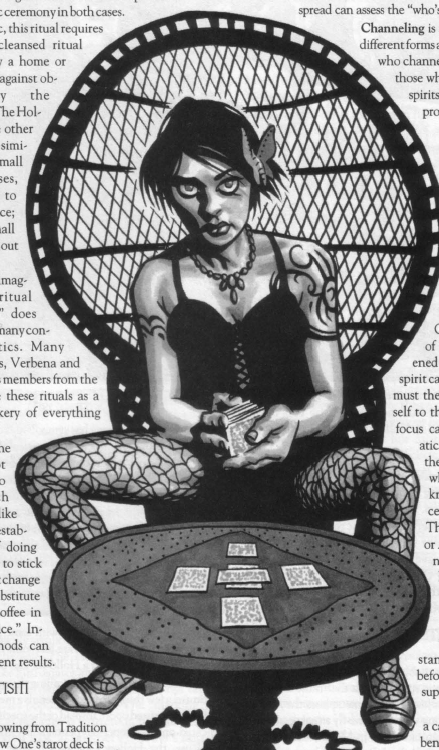
The Page of Pentacles told me not to take your personal check.
Hollow Rotes
These rotes follow in what seemed to me to be a really annoying trend in Mage sourcebooks: That is, if a Rote’s effect could conceivably done with a particular level of a particular sphere, you needed everything that applies not just one of them. Some of these are way too stringent for what they do. I’m leaving out some boring ones, like the one that makes spooky fog.
Alley Vanish
(Correspondence 3, Mind 2)
Allows you to duck into an alley and “disappear,” throwing off any pursuit. It’s vulgar if you vanish into a dead-end alley with zero apparent means of escape.
Antiquing
(Matter 4, Entropy 3, Prime 2)
Aside from sounding like slang for furtive gay sex in a nursing home, this Rote explains how Hollow Ones always have super-cool stuff despite being broke overgrown club kids. You can use it to “find” something worn-out and nonfunctional in a junkyard or thrift store and restore it to something extravagant. It’s coincidental as long as somebody doesn’t actually observe you transforming a cheap piece of broken trash into a million-to-one thrift store find.
Being Invisible
(Forces 3, Mind 3)
This is an example of what I’m talking about. It combines psychic misdirection with bending light to make you invisible--as long as you stay perfectly still. Despite being coincidental, it’s too expensive for what it does, in my opinion.
Bum a Dollar from the Universe
(Entropy 2, Matter 2)
A coincidental Rote that allows you to “find” enough money to get a meal or a bus ticket--generally limited to about $20.
Crowd Surfing
(Mind 4)
A cool Rote that lets you drift around a large group of people and mentally sense who’s cool, how people feel about each other, and so on, allowing you to integrate into an unfamiliar “scene” apparently without effort. In MET, you can use this to ask up to 3 people their goals for the scene.
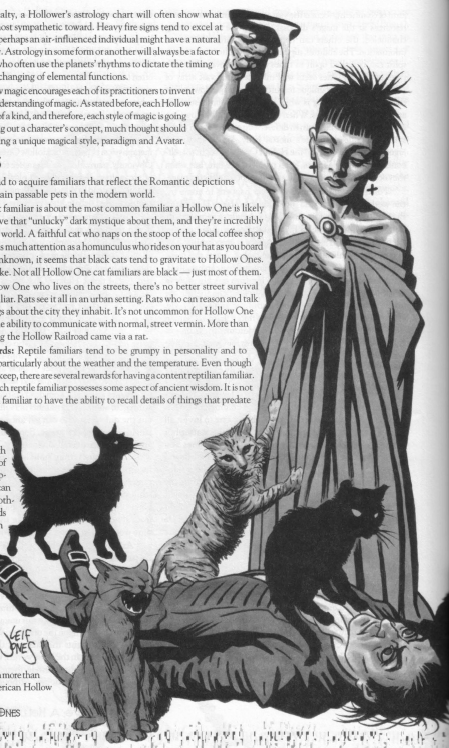
When they find out what she’s doing, they will write whatever laws they have to to make sure it’s a federal crime.
Cup of Joe
(Prime 3)
You can infuse Quintessence (up to your Arete) to make a caffeinated beverage into Tass.
Riding the Railroad
(Correspondence 3-4)
A vulgar teleportation Rote. You can take anything you can carry, so it’s often used to carry mail or to take luggage to a chantry where you’ll be staying. Correspondence 4 lets you take people with you.
Rooftop Leap
(Forces 3, Life 3)
It’s the Matrix Jump. It’s always vulgar, and lets you jump an extra 10 feet per point of Arete. Yes, you need three dots in two spheres to accomplish this. BULLSHIT !
Thought Transfer
(Forces 2, Mind 2)
This is what the Soundwave Masters use to encode a hidden message in music. I think this can be used to either send a specific, detailed message to another mage or to communicate feelings to anyone. It’s always considered coincidental.
Spot The Man
(Correspondence 1, Life 1, Matter 1, Prime 1)
It’s a Technocrat detector! It detects cybernetic implants and something called “primium.” (Seriously? Is this Exalted now?)
Traffic Pulse
(Entropy 2, Forces 2)
You can subtly alter things like how long it takes lights to turn, how thickly or thinly traffic congests in a given area, and cause minor traffic accidents. This can speed up or slow down a journey by car, or create distractions through minor accidents.
Vext
(Time 3, Entropy 2)
A famous Hollow curse which is, by honour, never invoked on a fellow Hollow One. It basically causes a bunch of minor setbacks and irritations--everything goes wrong for you. When at war, Vext is often used on targets days in advance of a calculated strike.
We’ll Get There
(Correspondence 1, Entropy 1)
A Rote that points you in the right direction when you’re lost, as long as you have a general idea where you’re going.
Writing on the Wall
(Mind 3, Matter 1)
Another Hollow Railroad spell, it turns graffiti into a magical map conveying messages and directions to its intended audience. Hollow Ones use it to point each other toward chantries, away from the lairs of monsters, and so on. “Coincidental, although often illegal.”
Some of these are pretty neat, but I wish there was at least one good Hollow rote that just melts somebody’s brain or tears them into pieces.
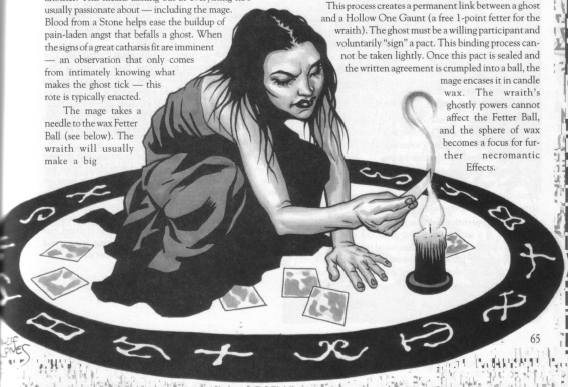
Yeah, the new Magic set has cards that you smoke instead of putting into your graveyard. They banned it from tournament play on its release date.
Necromancy is a special thing for Hollow Ones; there are some Rotes just for that.
Fetter Ball
(Spirit 4, Prime 2)
A prerequisite focus for many other necromantic effects, this allows a mage to sign a pact with a spirit, which is then encased in a ball of candle wax, becoming a free 1-point Fetter for the ghost.
Blood from a Stone
(Spirit 4, Mind 4, Life 3)
Ghosts hate this, for the same reason little kids hate shots. Once you’ve made a Fetter Ball, if the wraith gets all Angsty on you, you can use this ritual to literally drain out some of its Angst in the form of a thick, dark blood that leaks from the Fetter Ball when you poke it with a needle. It’s vulgar as hell, produces a great torrent of whining from the wraith, and requires you to burn the blood with sulfur afterwards.
Shelter from the Storm
(Prime 4, Spirit 4, Entropy 1)
Creates a Haunt with a rating equal to your Arete, lasting for one scene. I don’t know Wraith well enough to know what this means, but it protects you from the Maelstrom.
Voice Across the Void
(Mind 3, Spirit 3, Correspondence 2)
Using your Fetter Ball, you can communicate with your bonded spirit across any distance.
Hollow Ones are also very into dream magick. Called “narcoleptics,” Hollow dreamers are likely to get wrapped up with the fey, whereupon they often get addicted to Glamour and vivid dreaming, and have to have their friends pull them out of it, kicking and screaming.
Dream Play
(Mind 3, Prime 2, Time 2)
A Hollow One can spend hours constructing a dream scenario in his mind, then invite a group of people to dream together and live out the scenario. Regardless of what happens within it, the whole things has been just a dream when they wake up. It requires 8 hours of sleep for all involved, regardless of the length of the dream, and it’s coincidental assuming you don’t try to pull in unwilling victims, which requires a Willpower challenge.
Running Scenarios
(Mind 4, Time 2, Entropy 2)
This Rote allows you to fuck with your REM sleep so that you get what feels like days or weeks of time within a few hours of sleep, so you can train, make plans, and prepare yourself for an upcoming event. Mechanically, it allows you to fake having some dots in an Ability that the ST anticipates you’ll need, for a number of days. You need dots in the Dream background to make use of this.
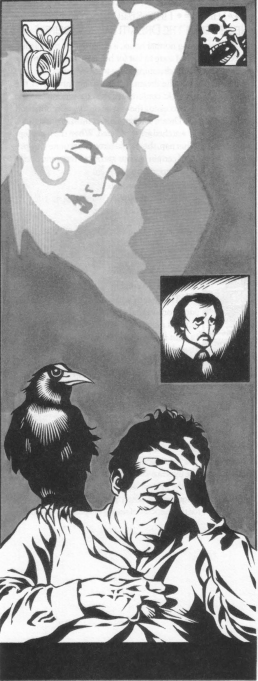
Jesus, what idiot invented bacon absinthe?
Hollow Wonders
Looking Glass (2): A pocket mirror that can spy on other locations within a range of 1 mile (unless you augment it with your own Correspondence). Strangely, it doesn’t say anything about restrictions on where and how you scry.
Rimbaud’s Recipe for Sacred Absinthe (3): A scroll with the recipe for an absinthe that lowers the Gauntlet by 4 for purposes of communicating with other realms (but doesn’t actually let you sidestep into the Umbra). Requires Spirit 3, and potentially months of gathering special herbs.
Tass Tapes (1): With Prime 3, you can infuse these with a point of Quintessence. They can also be used to carry the Sound/Thought Transfer Rote.
Next time, on American Hollow Story : “Hollow Personalities.” This is the most accurate title of anything in the book.
Chapter 3: Hollow Personalities. I can’t change that title to make it more accurate or insulting.
Original SA post
Tradition Book: Hollow Ones, Chapter 3: Hollow Personalities. I can’t change that title to make it more accurate or insulting.
Chapter 3 starts with a joke about Snow White and the Seven Goths (Gloomy, Sappy, Snooty, Sexy, Smarty, Perky, and Hateful) and leads into another unfocused ramble to remind us that Hollow Ones aren't all goth and don't fit goth stereotypes all the time, the same is true of goths themselves, and that the Hollow Ones didn't invent the gothic scene, they just nourished it. By the way, did you know that the Traditions proper don't appreciate the Hollow Ones, and that no two Hollow Ones are alike because being a Hollow One is about expressing yourself? You did? Oh, did we go over that a dozen times already? Good.
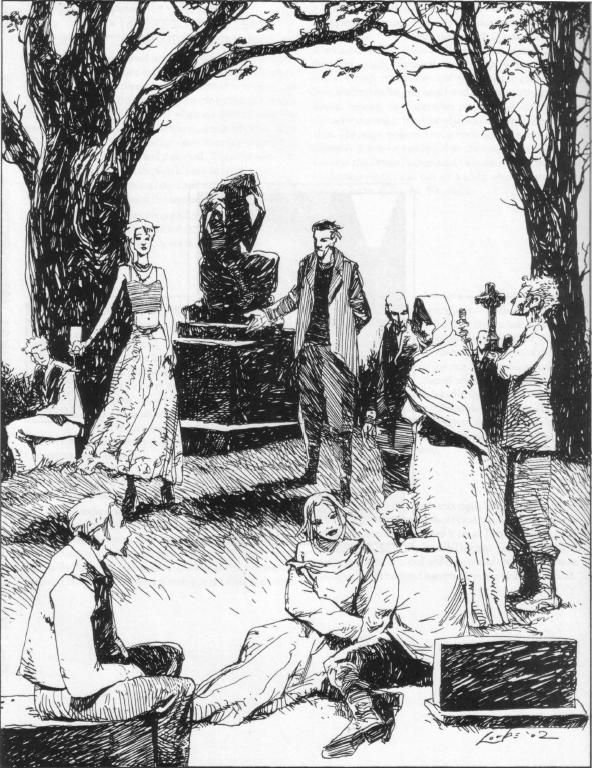
Dearly beloved, we are gathered here today to join this woman and this crumply statue in the bonds of holy matrimony .
The other Traditions don't appreciate the "nuances of philosophy and…enduring strength" that the Hollow Ones exhibit, or value their contribution to the fight against the Technocracy through "passover assertion via existence." That is, the Hollow Ones believe in the principle "living well is the best revenge." If you live however you want to live, you're bucking the Technocracy as well as any Tradition mages or fellow Hollow mages who snub you. Win-win!
Hollow People
Hollow Ones are preoccupied with defining themselves, and their social ladders are an extension of that--how you present to others is an important part of defining yourself, and so is comparing yourself to others and judging their public persona relative to your own. The most well-known and well-respected Hollow Ones are the mages who've spent decades crafting their personal legend.
Neville Sinclair Nevermore : Neville is the A+ #1 mysterious scene queen of the Hollow Ones. Neither his true age nor the circumstances of his Awakening are common knowledge. What is common knowledge is that transferring his mind from body to body is his preferred method of immortality. He's rumoured to have been alive since at least the 15th century, but of course, he didn't take part in the founding of the Hollow Ones until the 1920s.
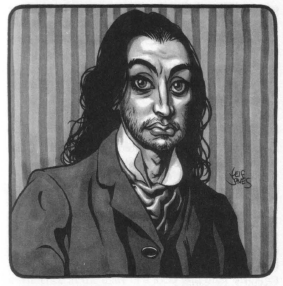
Neville's pretty shit at possessing guys who don't look like walleyed fish.
Neville wears the body of a tall, pale, gaunt Caucasian man with long dyed-black hair, and always dresses in suits in an early-20th century style. He manages to hold the enviable position of someone who is a master of the Hollow One social network without appearing to need it--he's arrogant, doesn't allow anyone outside his cabal to get close to him or contradict him, and often knows the names and relevant details of people who've never met him, solely through his keen memory and information network.
Penny Dreadful :
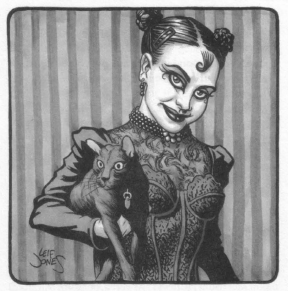
You just know she calls complete strangers "sweetie."
Penny dresses like a classic Victorian goth (the kind that don't really exist outside of photo shoots because real people don't have an hour to dress themselves every day). Neck-high collars, ankle-length gowns, a corset on top of her dress, and heavy makeup. Her one concession to being a flawed human being is having faint traces of acne scarring. Assuming she spends a lot of time in San Francisco, she must smell like ass in the summer. As of 2001, Penny is 28, and like all White Wolf signature characters she has a boatload of XP.
Josepha de Espronceda : Although she was born in 1891 to a poor Spanish family with a history of witchcraft, Josepha's parents wanted nothing more than to marry her off to a nice farmer. Josepha wanted nothing more than to be a doctor. She was refused entry to medical school, then deceived, drugged, and raped by a doctor who promised to teach her medicine in secret. What happened afterwards is unclear, but after Awakening and killing her rapist, it's clear that Josepha would have become Nephandi if Neville hadn't saved her and helped her overcome mental illness. She learned magic from him and was his lover for decades, until she began dabbling in "dark forces" in order to better understand and combat them. She left her cabal open to a Nephandi attack, Bog Asphodel died protecting her, and she left in shame.
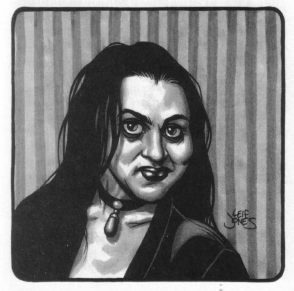
Josepha looks and dresses like Morticia Addams, except that years of guilt and regret have left her looking less "dark, mysterious and curvy" and more "bloated, pasty and disheveled." At her best, she seems melancholy, and other times she seems drugged and distracted. If she doesn't heal the rift between herself and her former cabal, most likely she'll commit suicide by throwing herself at the Nephandi.
Hollow Chronicles
Hollow Ones are flexible as far as multi-Tradition cabals are concerned--they'll join a cabal for personal reasons rather than because they were given marching orders, sometimes simply because they like the other members (what an idea)! Like any official Tradition, the Hollow tradition comes with a code of "street wisdom" that can conflict with the interests of the cabal--it's not homogeneous, but Hollow Ones often find it hard to refuse aid to other Orphans, even if it's dangerous or not worth the trouble.
All-Hollow chronicles supposedly provide two benefits--one, it breaks up the stereotypes because an entire gaming group can't all play the same stereotypical goth. Two, if you want the chronicle to drip with gothic atmosphere, you don't have to worry about Hermetics and Sons of Ether spoiling the mood with magic missile wands and ray guns.
Horatio's House of Horrors is a sample Hollow cabal which consists of a traveling circus with a haunted house as its centerpiece. Its leader is Benjamin fortune, a Hollow mage who gave up the life of a wandering hobo in 1952 to take a job as a carny. By 1962, he had changed his name in honor of Horatio Alger and established his own carnival, Horatio's House of Horrors. His cabal is composed of Orphans he picked up as employees along the way. The cabal's goal is twofold: One, they run an excellent haunted house which, with a little help from coincidental magick, encourages people to Awaken. Two, they're paranormal investigators. They debunk the garbage, and if a story is real and worth repeating, they incorporate it into the act to add a little magic into the world.
Horatio has been a mage and a vagabond since he left home at 17. A divorced father of three, Horatio is waiting for one of his grandchildren to awaken so that he can groom them to inherit the carnival.
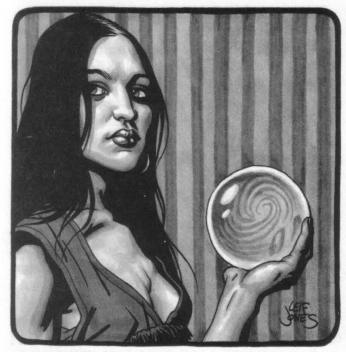
Mia Minuet has been a carny for 40 years. She comes from a middle-class family, and ran away from home after she was blamed for an accident that killed a child she was babysitting. She fell into drugs and prostitution until she found some stability working for the carnival. "Somewhere out there, a pornographic movie stars Missie Mango. Mia. To this day, Mia can't stand the sight or smell of mangos." Anyhoo, she awakened under the tutelage of an herbalist who treated her for her chronic colds and flus.
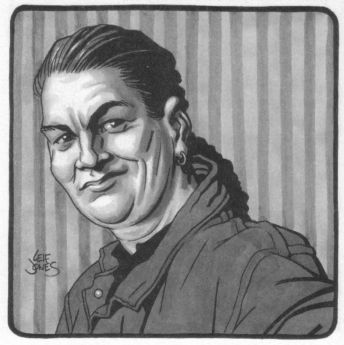
Mohican "Mo" Guyhot is a Canadian illegal immigrant who's been working odd jobs under the table since he fled a murder charge years ago. While working on a farm after a visit to Horatio's, Mo had a mystical experience that began his awakening. He returned to the carnival for guidance and has been a member of the cabal ever since.
Next time, on General Hollowspital: Signature characters and me throwing a screaming fit.
Chapter 3, Part 2: They all reminded Mark of the characters in a couple of Japanese animes
Original SA post
Tradition Book: Hollow Ones, Chapter 3, Part 2: They all reminded Mark of the characters in a couple of Japanese animes
The book’s ongoing story concludes (I hope) with Mark and Baron visiting the Hollow chantry in Hong Kong. It’s a two-bedroom apartment on a street that holds an open-air market which stinks of fish guts and sells pirated and knock-off goods, and the Chinese Hollow Ones are all intimidating characters who are into physical fitness and martial arts. They remind Mark of anime characters--I guess because all anime characters are scary martial artists and so are all Asian people!
Mark and Baron have a brief conversation about how people think all goths are snooty but they’re really not, and the Hollow Ones don’t preach any dogma except “no dogma!” How Zen! Oh, and everyone’s entitled to their opinion, but opinions create fashions which create opinions, and it’s like, chicken and the egg, man! You know? This reminds me of every “deep” conversation I had as a teenager that was really boring because no one actually said anything insightful.
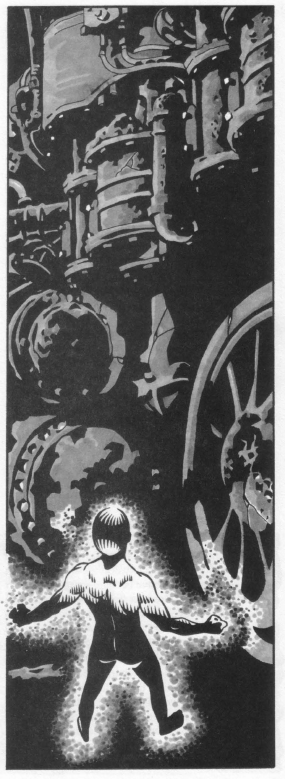
Putting on a Daft Punk helmet and fucking a train seems more like a Sons of Ether thing.
Baron shares with Mark the Hollow One party-line-opinions, such as they are, on everybody else in the World of Darkness. (These are delivered as running paragraphs, and not as line-item one-liners as in some of the older books.)
The Hollow Ones don’t care for the Celestial Chorus because organized religion is lame, y’know? The think that they have a lot in common with the Akashics because of “the philosophy of Void where you empty yourself so you can be filled.” They think they have a lot in common with the Euthanatos because “they like dead things and we like dead things too.” Lots of Hollow Ones are computer geeks so, hey, the Virtual Adepts are cool. Beyond that, the Traditions are alright because they each have something to offer, they’re just stuffy, y’know?
”We’re kind of a combination of Cultist of Ecstasy and Akashic Brother, with a pinch of Dreamspeaker and a shake of Verbena. Add in a teaspoon of Euthanatos and bake at 350 for a couple hours until crispy and blackened.” That tickled Baron. He laughed at himself and took another drink of his beer.
Don’t you want to adopt this Baron guy as your spiritual guru? I have to admit his presence in the book is an injection of realism, because he’s an innocuous stoner dudebro who’s agreeable but totally insipid, and those guys exist in every scene. I just wish he wasn’t the character delivering summaries of the Hollow philosophy.
The Technocracy! They’re The Man, bro. Gotta fight The Man. Technocrats are cowards who are scared of anything they can’t control and totally incapable of original thought. Hollow Ones fight the Technocrats just by existing and being themselves, because the Technocracy want to kill the world’s soul and turn it into a machine.
Vampires are not your friends. They don’t give a shit about living a Romantic ideal, and they definitely don’t want to encourage Sleepers to see the world in a more magical light. Orphans who fuck around with vampires don’t last long. Werewolves are basically the same--approach them only when absolutely necessary; they’ll rip you apart if you get in their way. Ghosts are a different matter--Hollow Ones are actually interested in getting to know ghosts and their personal stories; some of them just want to be able to say they’re friends with dead people.
Hollow Ones would like to become better acquainted with changelings, because they’re both defending Romance against the banality of the modern world, but faeries are distant, condescending, and mistrustful of mages. Ultimately, Baron concludes, dealing “the other supers” aren’t at all important compared to the Sleepers, because they’re the ones who have to be liberated from the Technocratic paradigm. Hollow Ones spend most of their time living among regular people, because they need an audience.
In a sidebar, Penny Dreadful asks Mark Moon what kind of person if he could be anything, in any place, at any time--a pirate? A knight? A Jedi knight ? (Seriously, and this is the book’s second Jedi reference.) Her point is, why aren’t you living your life as your best self, right now? Because no one else does? Because of what other people will think? So what?
And that’s a good point. If living true to yourself is risky, what price are you already paying by living a life based entirely on other people’s expectations and demands? I mean
Penny gave Mark a gentle smile. “That’s what Mostpeople think. Do you want to be one of the Mostpeople? No, of course not. You already know you’re not like the MOstpeople. You’re special. And you can be anything you want, in any way you want to be it. The worst crime a person can ever perpetrate is to kill his true personality in favor of something more socially acceptable. Mostpeople do it. You don’t have to follow in their footsteps. If they all jumepd off a bridge, would you do it too?” Penny smirked a cute, quirky kink of a a smile. Irony.
Nnevermind. Jesus, every time Penny Dreadful opens her mouth you know it’s going to be a pompous explosion of

I’m sorry, am I rambling? It’s just that she acts like every young woman I met in the scene who put on an air of being enlightened and “wise beyond her years” who was just full of hot air and scared to have a real personality instead of a gimmick.
Mark takes a moment to consider what kind of person he’d like to be. This is his answer:
I would be an artist in Europe in the early 20th century. I’d have a studio where my models would come to pose for me. I’d eat bread and cheese and meats, and I’d drink red wine at least once a day with my meal. I’d wear fitted jackets over loose white shirts with billowing sleeves and leather pants. I’d practice fencing and ride horses to stay in shape. I’d drink coffee in cafes with my fellow artists and discuss the play of light when a beautiful woman tips her head just so or a man clenches his fists just so--things important to an artist and only visible to the eye of those who are looking for them. Movement and gesture can tell you so much about a person, yet it’s so subtle that most hardly notice. Artists notice.” As if suddenly realizing that he was rambling, Mark blushed.
The peak of Mark’s Maslow Pyramid is “Privileged white man who eats food.” Ecce homo.
Penny tells Mark to never let the Technocracy control him and never be embarrassed of his dreams and they leave to get dinner and fuck this, I can’t take it anymore.
Hollow One Templates
The template characters in this book deserve special mention because the author’s approach is absolutely terrible. Every character is directly inspired by a fictional character, and the writeups explicitly name-drop every one. Templates that are takeoffs or outright jokes are not uncommon--from Vampire books, I remember a Gangrel who was an Indiana Jones style adventuring archaeologist, a Texas Chainsaw Nosferatu, and a Toreador that was obviously a mocking reference to Rob Liefeld. But almost all of these templates is a narrowly-inspired stereotype and admits it with a very clumsy reference. It’s just weird.
The Gentle Giant: The best one of the bunch; she is a well-meaning kid who just didn’t fit in due to size and awkwardness, and found friendship with ghosts while working a graveyard shift. Granted, “You are shunned and misunderstood, more like Mary Shelley’s Frankenstein’s monster. You sympathize with her creature,” but it’s a loose connection, and this template appears to be an actual identifiable human being with whom we can sympathize. A Good Template.
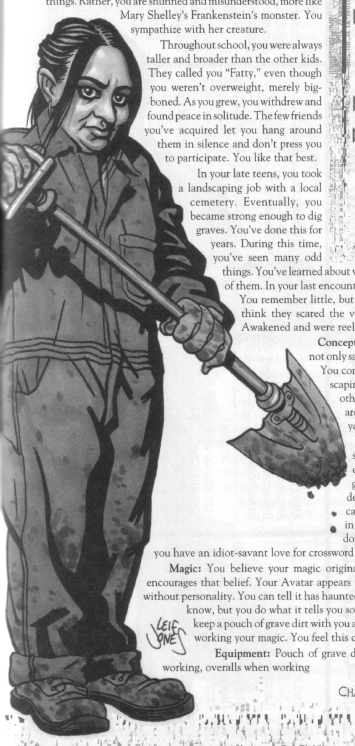
I don’t want to be cruel, but...your ghost friends all call you fat. And Johnny Football didn't really write that note asking you to the Homecoming dance.
The Anonymous Benefactor : “Charles Dickens himself could not have created a character more Dickensian than you.” This character is a man who clawed his way out of poverty to become a successful accountant, and started amassing wealth by using numerology to gain an edge in the stock market, which led to Awakening. He uses his money to support Orphans. There isn’t an explanation for why he dresses like a 19th-century “barrister” other than “he felt like it one day.”
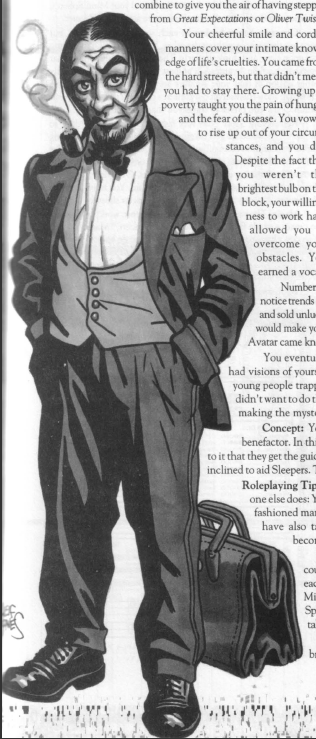
If you’re not going to stop cutting your forehead with razors, you could at least put some cocoa butter on it now and then.
The Gemini Twins : “More than once, someone commented that you were twins separated at birth, like the good and evil twins in The Man in the Iron Mask by Alexandre Dumas.” This template is actually for a pair of characters who share an Avatar, and are so in tune with one another that they look alike and dress alike and finish each other’s sentences and are never apart and probably creep the fuck out of everyone. This character concept actually doesn’t hew to its literary reference, but that only makes the clumsy reference all the more unnecessary.
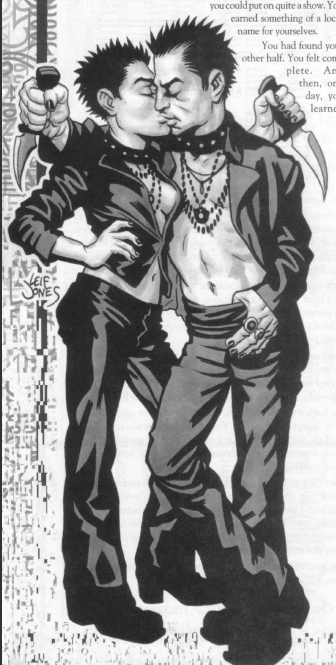
I can’t wait to see their Christmas sweaters.
The Curious Coroner : “Tim Burton has your number.” “You admire Ichabod Crane. He faced his fears with the Headless Horseman of Sleepy Hollow.” “You could intellectually challenge even Sherlock Holmes.” This guy is a medical doctor who investigates supernatural happenings. Again, he could do his job--and fulfill his character concept--just as well without wearing Victorian-era clothing.
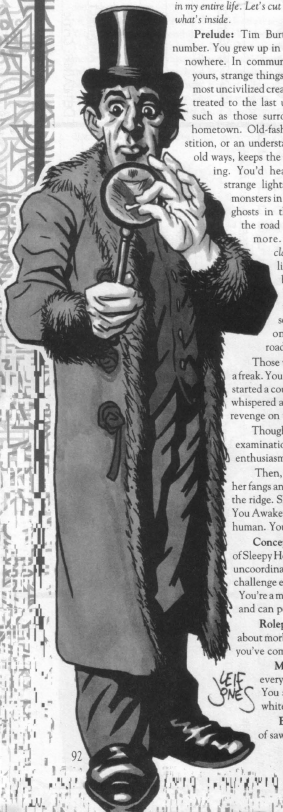
It says “Your hat is stupid.”
The Wise Flake : Oh look, it’s one of those annoying child-women I was telling you about a few paragraphs ago! I swear to Christ I didn’t plan this. “Author Neil Gaiman likes to create characters that combine innocence with wisdom.” That’s the first sentence. I refuse to read the rest of this page.
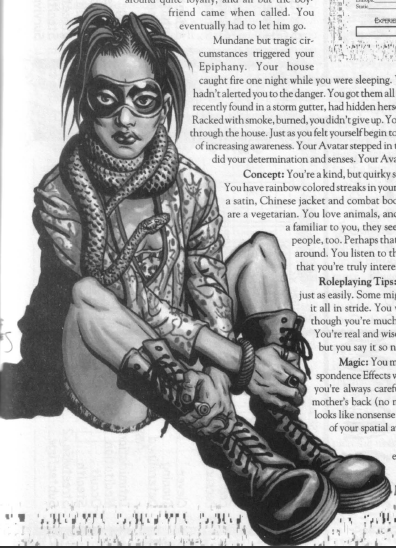
I’m rooting for the snake.
The Freak : “You wish you had stepped out of Clive Barker’s Hellraiser series, but your origins were actually quite lame.” A rare moment of honesty. A kid from an abusive family engages in self-harm before becoming a body-modification enthusiast.
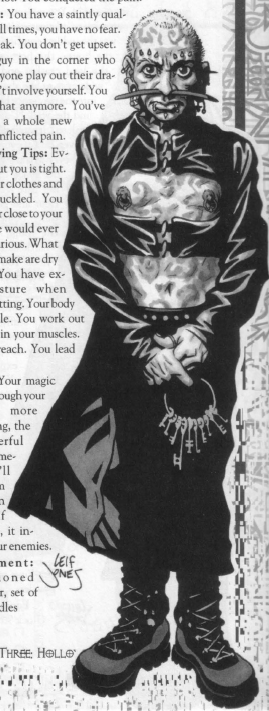
The 2012 Cenobite GT comes with ergonomic handlebars.
The Tragic Hero(ine) : “You sympathize with John Constantine, a character created by Alan Moore and the main protagonist in the comic book Hellblazer , published by Vertigo Comics.” Do you want to add an Amazon link, too? So this character had a supernatural encounter at 14 and has been a supernatural private eye ever since. There’s nothing else to say, except that this John Constantine action figure comes with a trenchcoat, a crucifix, and a 9mm with silver bullets and karate goth action.
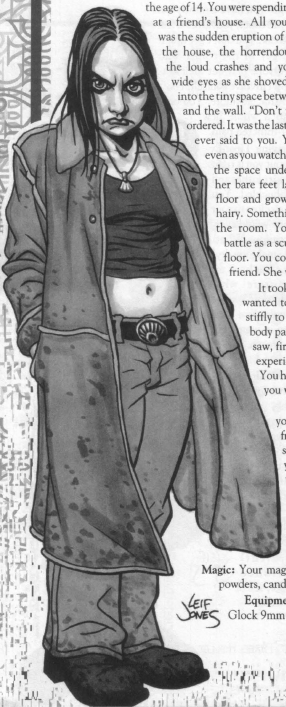
This is why John Constantine wears Stain-Guard.
The Reality Warrior : “You model yourself after Neo from the movie The Matrix . He is your hero.” The Reality Warrior was a Virtual Adepts recruit who rejected Virtual Reality--yet he models himself after a fictional character from a movie when he himself is the real deal. This is another example of a concept that was fine by itself before the obvious reference was thrown into the text.

Here’s a hint: Your goth shirt shouldn’t announce to the world what kind of pantyhose your mom wears.
Next time, on The Legend of Shitty Hollow : The end is the beginning is the end.
Epilogue: You would not believe the shit I've seen
Original SA post
Tradition Book: Hollow Ones, Epilogue: You would not believe the shit I've seen
Alien Rope Burn posted:
It's pretty amusing how Hollow Ones goes on and on about them being individualists, but every one of them we see is a derivative pop culture drip cup. It'd actually be a really great take on them if it were actually done on purpose...
Dammit Who? posted:
It's so consistent that I'm starting to wonder if it really is on purpose. That description of Mark's perfect life where he flounces around wearing billowy sleeves, for instance. His ideal life is one where he has the fashion and social life of a painter, without having to do anything as tedious and time-consuming as actually paint something.
Tradition Book: Hollow Ones has two authors. I'm guessing that whoever did the character templates wasn't responsible for the bulk of the book, and didn't think it was worth talking about.
The non-Tradition of the Hollow Ones shows some genuine promise. A loose confederation of mages whose Awakening isn't tied to a particular Weltanschauung, and whose magical practice isn't based on any historical framework: instead it's about the idea of Romance and their preoccupation with their own personal legend. The Hollow tradition would actually fulfill its role as a dragnet to catch and hold the most facile and self-absorbed mages who are wasting the gift of Awakening by imitating pop-culture cliches, but also provide a safety net for some of the most independent and eclectic mages around.
The Hollow Ones are supposed to be the Living Embodiment of Romance, so what say we get some Romantic characters? There's no Byronic Hero template. The Romantics developed the concept of the Sublime in art; wouldn't a David R. Brower-style conservationist outdoorsman be a great breakaway from the Hollow One mold? The book has long sections discussing factions of the Hollow Ones like the Soundwave Masters, the Vodoun Gangstas, the Railroad Riders, and the Social Terrorist Punks…so why the fuck isn't there a single DJ, hip-hop artist, crust punk, or Skinhead Against Racial Prejudice? Instead we get stuff like "You are an actual, real-life magic hacker, but you adopted a fictional character from a movie as your personal hero."
Oh, and all of Leif Jones' character portraits look like a chubby Latino kid put on way too much makeup. Just throwing that out there.
Hollow Ones: Epilogue
Mark and Baron return to the Waydown chantry in San Fran to find Penny sitting around. She informs them that they never found out who was leaving those eyeballs around Hollow chantries, but they were just cow and sheep eyeballs, and the whole thing was a Hollow prank. (Do you remember that plot tidbit from the first chapter? Me neither.) Mark and Baron laugh. Neville came up with the totally brilliant idea of cleansing the eyeballs' Patterns and leaving them in local graveyards for Sleepers to find and remark upon. Mark and Baron are rolling with laughter. It's like the end of a children's cartoon special where everyone is laughing even though nobody told a joke.
Except for the character sheets, the book ends with a list of reference works. Here it is:
Music : "All manner of gothic and industrial music," but especially Dead Can Dance.
Comics : The Invisibles and Promethea .
Books : "Anything on modern chaos magic," Liber Null , Robert Anton Wilson, and "the Romantic poets" and T.S. Eliot thrown in as an afterthought.
Movies : The Craft , Cecil B. Demented , Gothic , The Crow , and Groove , a movie about the Bay Area rave scene.
This really pisses me off. The sources that ought to be the primary inspiration for the book get some lip service in the form of half-hearted comments that you should definitely read Romantic authors and listen to gothic and industrial music, but none of it is actually worth discussing or even calling out by name--except Dead Can Dance. (Which, by the way, isn't a gothic rock band, but a New Agey folk band that gets played a lot in the clubs, for some reason. It's great for sucking all the oxygen out of the room when you're tired of seeing people actually dance.) There's no mention of the Batcave, Mick Mercer, or anything covering the development of the gothic subculture--if you want to understand clubs, the book tells you to watch a movie about ravers.
I'm at a loss. White Wolf, the company that was branded as a RPG publisher for goths, who needlessly inserted a gothic splat into their game about wizards, put out a sourcebook for their goth wizards and hired a writer who apparently knew absolutely nothing about the gothic subculture and had little or no interest in it. So that's Tradition Book: Hollow Ones. A book about a non-Tradition of unimaginative poseurs masquerading as individualists masquerading as unimaginative poseurs.
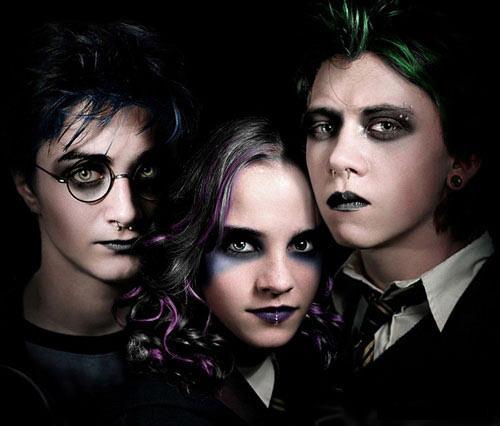
No, fuck you, Dad
Finally, there's the Chupp Test. That's an informal term for measuring the usefulness of a splatbook--it asks, "Does this book make you want to play this splat, even if you didn't before?" If anything, this book is Antichupp. If you didn't like the Hollow Ones before, it definitely won't win you over. If you did like playing Hollow Ones, I daresay reading this book will make you think "Wow, even the developers have no idea what to do with this. Maybe my special snowflake character wouldn't be so out of place in an actual Tradition after all. Putting up with the Hermetic hierarchy has to be better than competing for a wink and a handjob from a grown man who calls himself Neville Nevermore."
When handed a #2 pencil and a copy of the Chupp test, Tradition Book: Hollow Ones puts the paper on the ground and shoves the pencil up its own ass, and takes a big black gloomy espresso-fueled shit all over it. It shits on its source material, it shits on the few peppercorns of worthy ideas it develops early on, and it shits on the $19.95 of everybody who bought a copy of this rag.
Penny just continued to smile, smug. Her eyes twinkled. Mr. Mistoffelees licked one of his paws.
Kiss my ass, Penny.